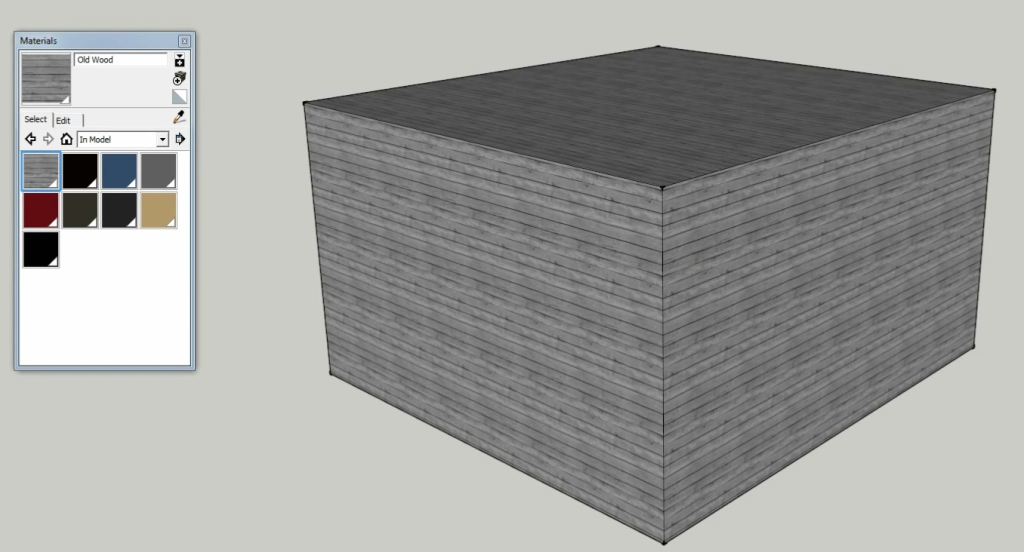
That’s all there is to it now the collection name (same as the folder name) and its contents appear in the Styles window. Then just browse to the folder where you’ve placed your extracted style folder. Then apply the brick textured material to the wall faces as desired. In SketchUp, open the Styles window and click the Details arrow. Then Edit the various wall parts in turn, and use a Plugin like thomthom’s CleanUp to remove the selected coplanar edges which are unnecessarily triangulating those faces. Trying to fix it afterwards is too much of a pain. The way I’d do it is to import it at into a new file at the correct size. When you ‘baked’ the textures for those triangles the texture image does not perfectly follow the sides and you get white-bleeding… hence the spider web look now indelibly baked into the model. If it were unScaled then the material would apply properly. What Options did you choose for the import units ? Select it and look in the Context-menu to see the Reset Scale option is available - which indicates this.

The end wall is scaled down from it’s original size - I suspect 2.54 - inch/metric conflict. Remodeling project (the brick will stay the same). Use SU to examine different siding, trim, and door colors for a Mentioned, I’m new to SU so any suggestions are welcomed. I’ve include a link to the model (below) so you can take a look. Replace all those with ones created in SU once I sort of know what I’m Some textures were applied in SE, but my plan is to I’m using was created in SU based on picture I took of a wall (cropped Scaled after importing, although I did explode it one level to make itĮasier to access the surfaces for painting/texturing. I did this because it’sĪ lot easier to apply colors and textures with SU than SE. Once your Sketchup and Revit model has been cleaned up, these issues will no longer appear.The model I’m working with (of a house) was actually created in anotherĪpplication (Solid Edge) and imported into SU. Adjust the geometry in the file and try the import process again”. This result can be caused by various issues with the source file. Decrease the complexity of the file or try importing only selected layers to resolve”,Īs well as “Revit cannot import some of the geometry. Host by Face tools may not select the imported meshes correctly. “Too many faces were created from imported meshes. Remove unnecessary geometry or split the instance into multiple instances”, “This family instance has too many edges. This will fix issues when importing into Revit such as: For example, you can:ġ) Go to “Window, Model Information, Statistics, Purge Unused”Ģ) Unhide Objects & Switch on Layers, Copy All to a New Fileģ) Use the Extension: CleanUp3 (via Extension Warehouse)Ĥ) Visit: (follow along to optimise your model) If you have any warnings or errors appear when attempting to export from Sketchup or import into Revit, consider cleaning up your model in Sketchup before exporting. If preferred, you would then be able to change the walls to be Walls in Revit, or the floors to Floors in Revit. This allows us to import the Sketchup Version 6 file as a generic mass.

Once exported from Sketchup, I open up Revit and create a “In-Place Mass”. This preserves the model’s quality and allows us to import it directly into Revit. In this tutorial, I begin by exporting the 3D model from Sketchup as a “Sketchup Version 6” (.skp) filetype, instead of an AutoCAD drawing (.dwg). This can also cause unwanted errors and warnings.
#Importing brick styles for sketchup how to#
In this Sketchup and Revit tutorial, you’ll discover how to export the Sketchup model while maintaining and preserving its quality and three-dimensionality.Īnother common mistake I see students make is that they will import the CAD file directly into Revit, either by importing or linking it. This can cause unwanted issues and problems, ruining the mass of the 3D model and turning it into a 2D drawing. The typical process I see architecture students take when exporting from Sketchup to Revit is that they’ll export the Sketchup model as.


 0 kommentar(er)
0 kommentar(er)
